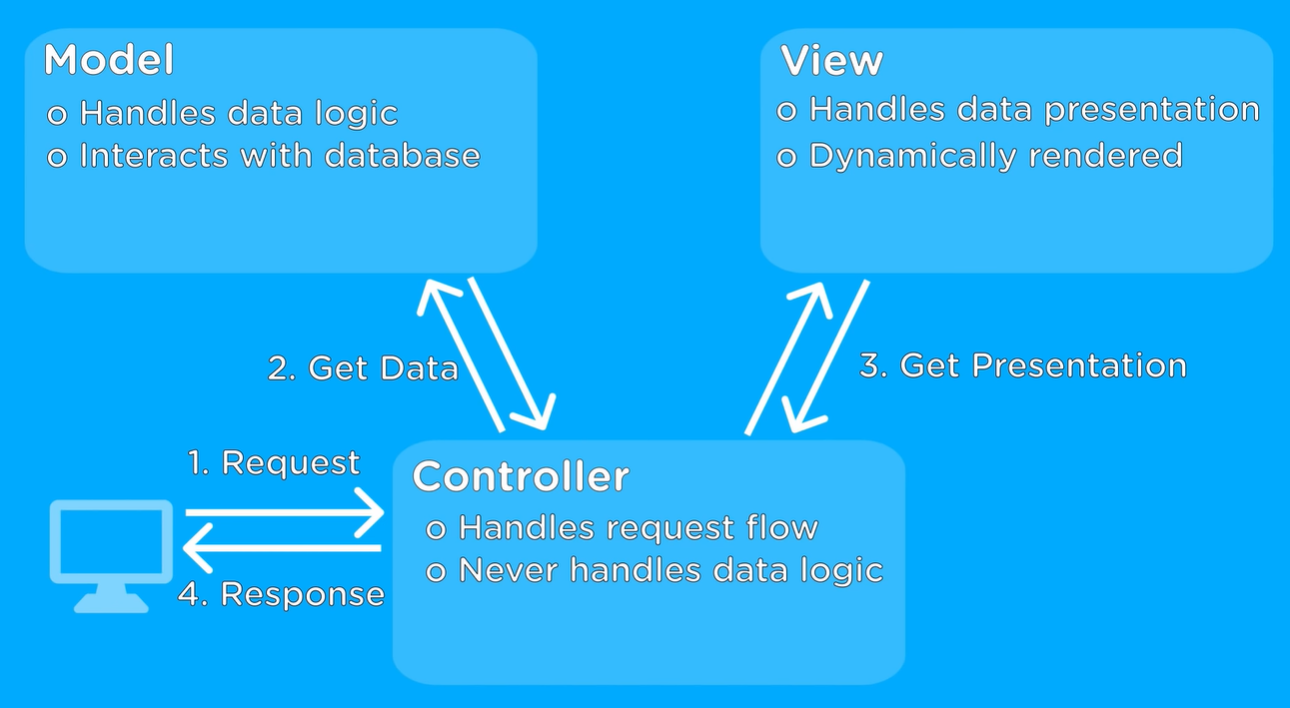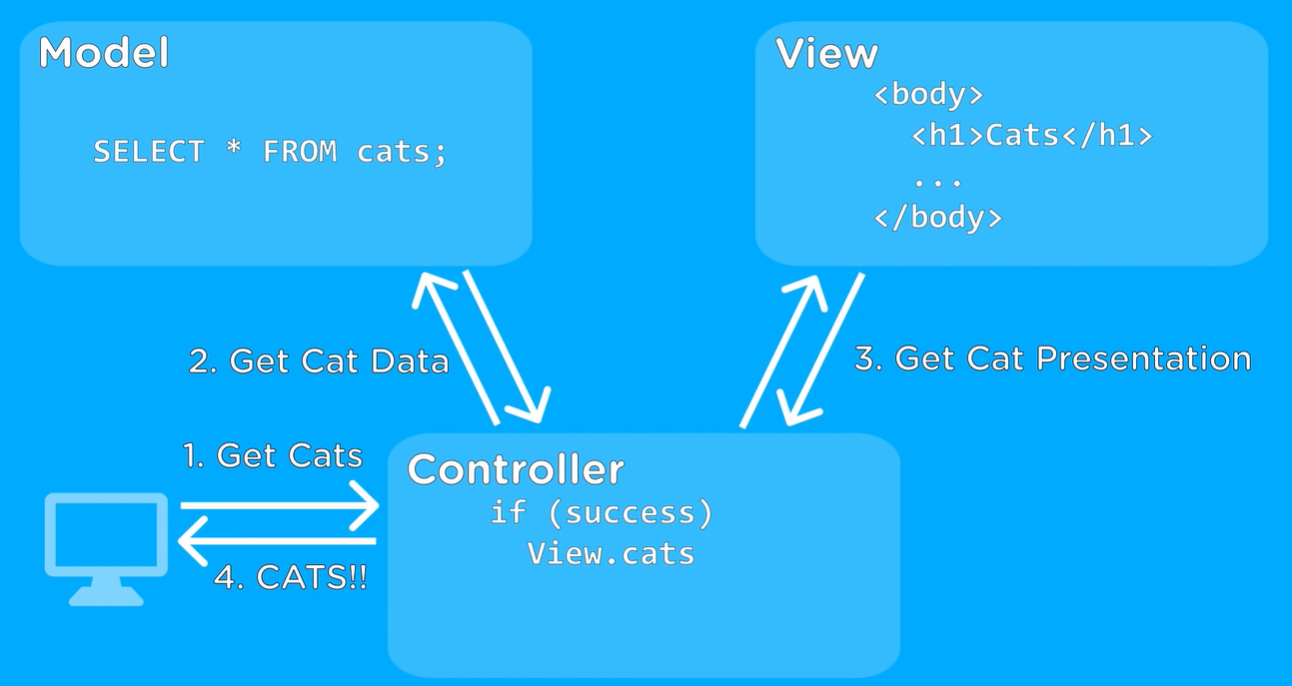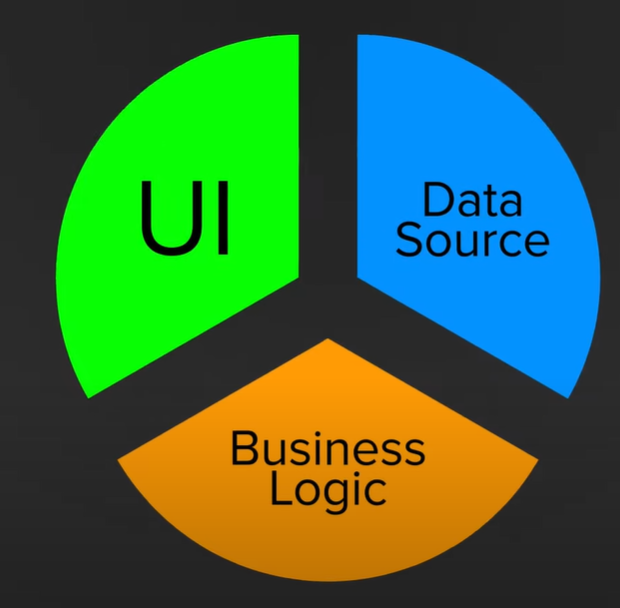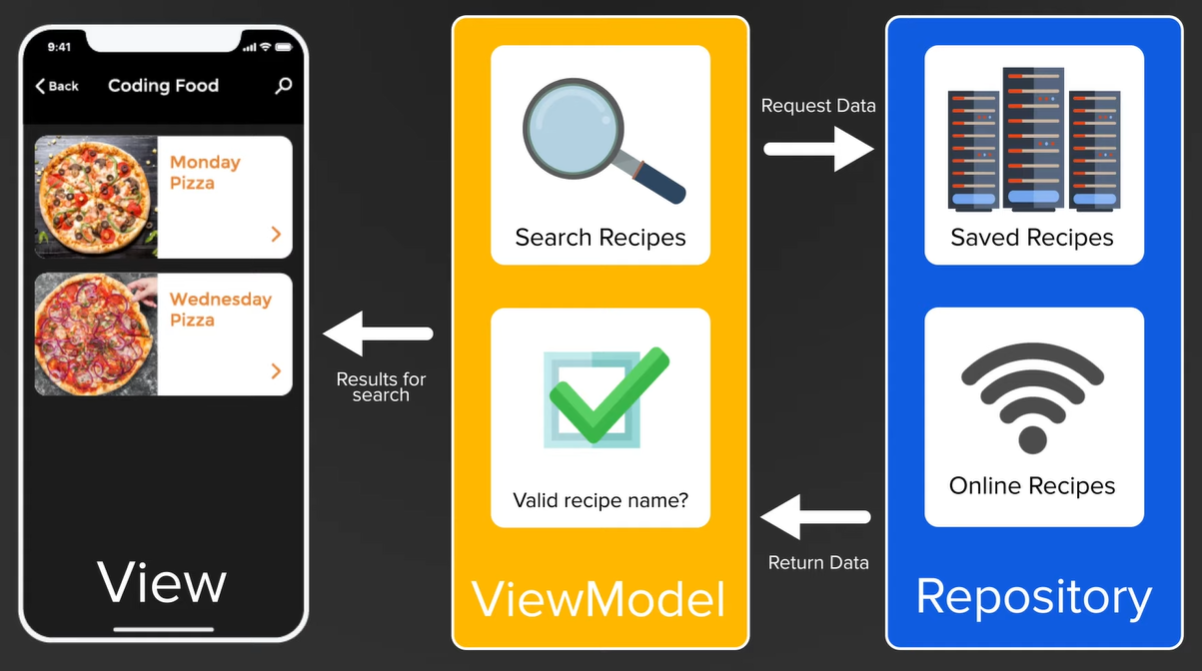# Design Patterns
# Model View Controller
Traditionally used for desktop graphical user interfaces (GUIs), this pattern has become popular for designing web applications.


# Controller
- Handles clients request
- Not much code
- Asks model for information
- Handles failure and success
# Model
- Handles data logic
- Interacts with database
# View
- Handles data presentation
- Dynamically rendered
- Only cares about presentation
Model and view never interact with each other
Model handles all the data
View handles all the presentation
Controller just tells what to do
# Example) blog post
- Web browser or client sends the request to the web server, asking the server to display a blog post.
- The request received by the server is passed to the controller of the application.
- The controller asks the model to fetch the blog post.
- The model sends the blog post to the controller.
- The controller then passes the blog post data to the view.
- The view uses blog post data to create an HTML page.
- At last, the controller returns the HTML content to the client.
# Model View View-Model



- Easily understandable
- Easily extendable
- Easily testable
# Model
- Database
# ViewModel
- Business logic
- Functions.
# View
- UI
- View should not have business logic
# Data binding
- View references view-model and checks for change to update itself.
← The Clean Code ERD →
